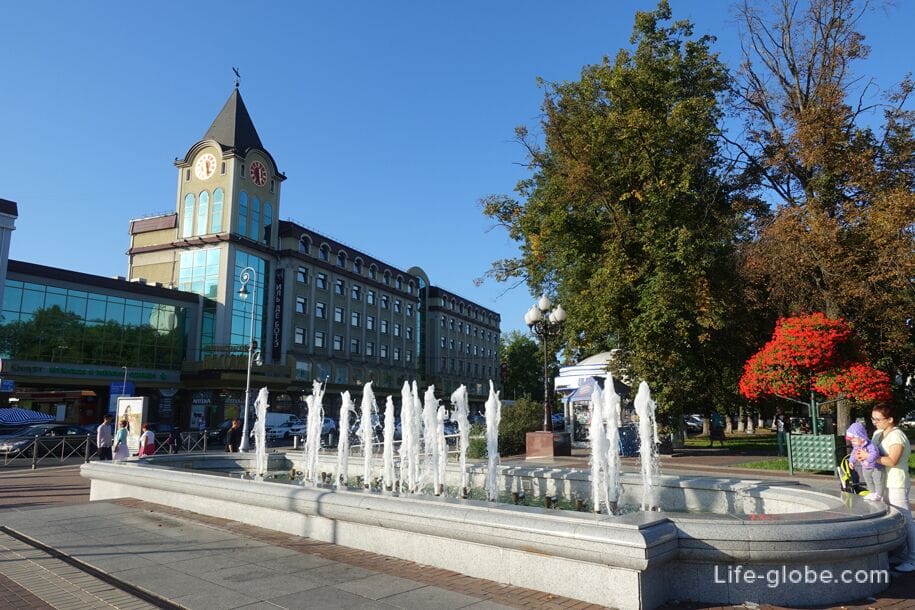
The Kaliningrad Zoo is one of the largest and oldest zoos in Russia.
Along with the zoos of Moscow and St. Petersburg, the Kaliningrad Zoo is one of the three historical zoos of the country.
According to the reviews of visitors, the zoo in Kaliningrad deserves a rating of 5+: in terms of the number of animals, grooming and general impressions.
Kaliningrad Zoo is located on the territory of the former Konigsberg Zoo, which was founded in 1896 by German entrepreneur Hermann Klaass. Kaliningrad zoo moved after the surrender of German troops in 1945.
At the moment, the zoo occupies an area of 16.7 hectares, on which there are aviaries with animals, a bird house, a terrarium, an aquarium, a house of contact animals, an arboretum, sculptures and monuments, a playground, a square with a fountain, as well as recreation areas, gazebos, ponds, cafes and snack bars.
In front of the entrance to the zoo, on the railing of the fence, there is one of the sculptures of Kaliningrad homlins - baby Ulya - a mischievous girl depicted sitting on an unusual vehicle - a snail. Learn more about all the homelins in Kaliningrad...
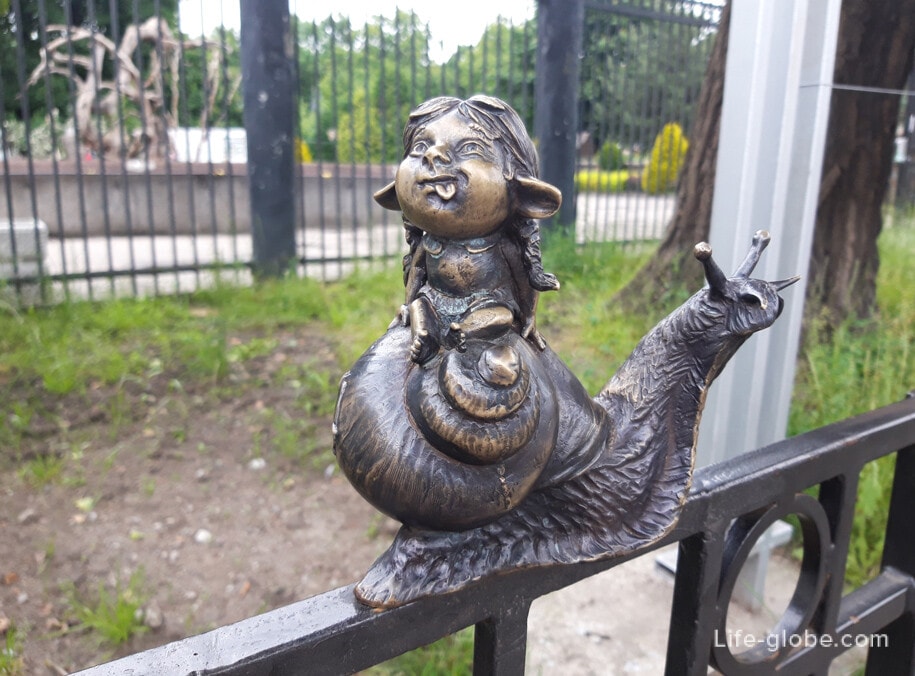
The zoo's collection includes about 2,360 animals of more than 300 species, including: mammals, birds, reptiles, amphibians, amphibians and fish.
On certain days of the week and hours, demonstration feeding of elephants, giraffes, crocodiles, bears, seals, turtles, fish, pelicans and flamingos is carried out. To clarify the days and hours of feeding, as well as other information, you can visit the official website of the zoo (the site is listed at the end of this article, in the section "Practical information").
At the entrance of the zoo guests are greeted by a family of funny raccoons


Important ostriches

At the thematic object "Ice Rock", representatives of the pinnipeds order live on both sides: the Baltic gray (long-muzzled) seal and sea lion.
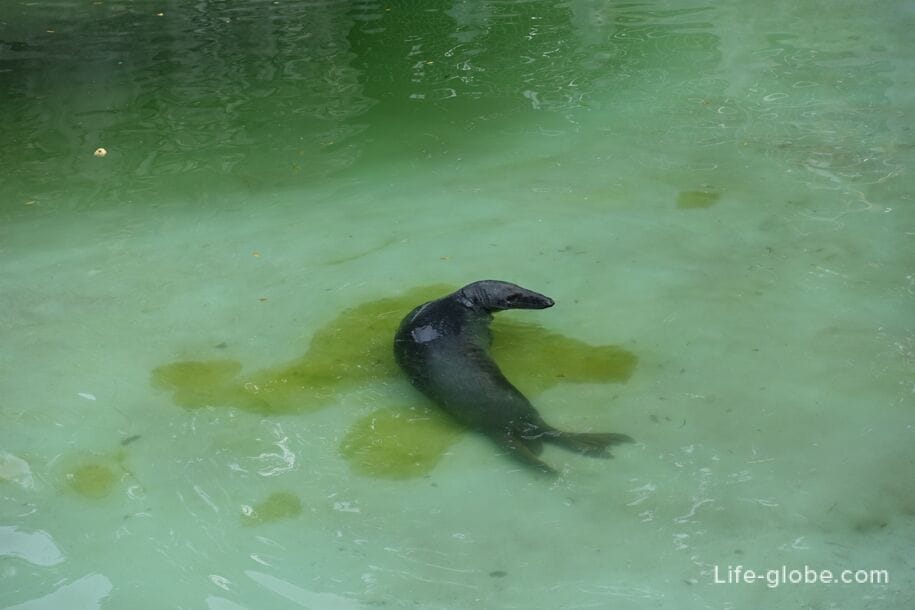
Nearby, in a small aviary, Brazilian (plain) tapirs walk around. Pregnancy of these cute-funny and sociable animals lasts 385-412 days, after which 1 (less often 2) spotted-striped cub is born in the shelter.


The European red deer proudly looks around at visitors and is always on guard, and suddenly someone will covet its territory.
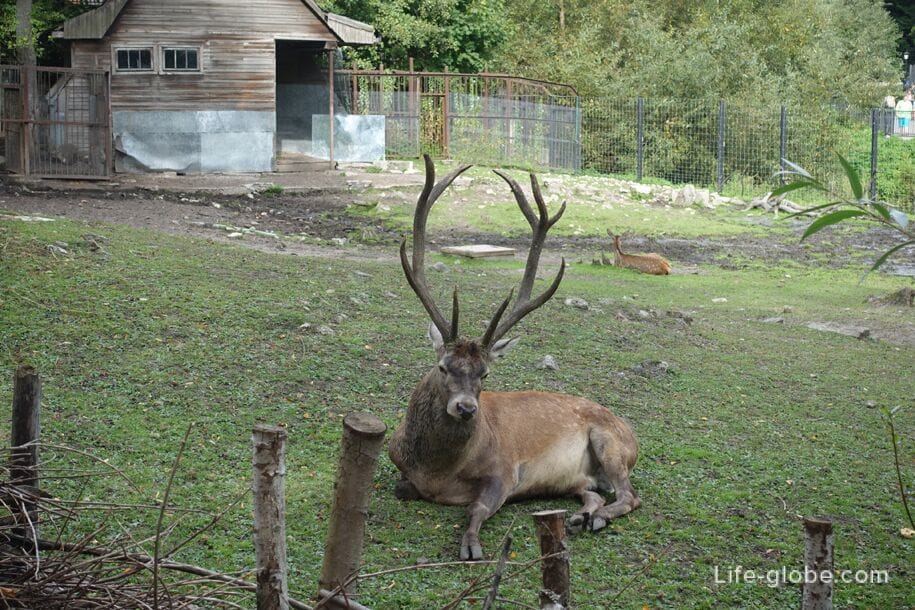
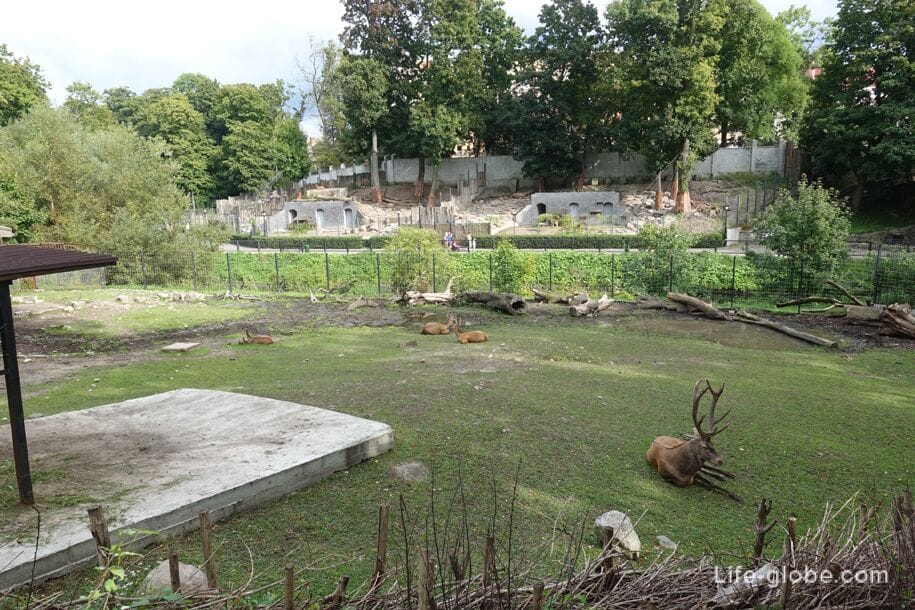
Brown bears begging for treats from visitors (it is forbidden to feed animals in the zoo!).
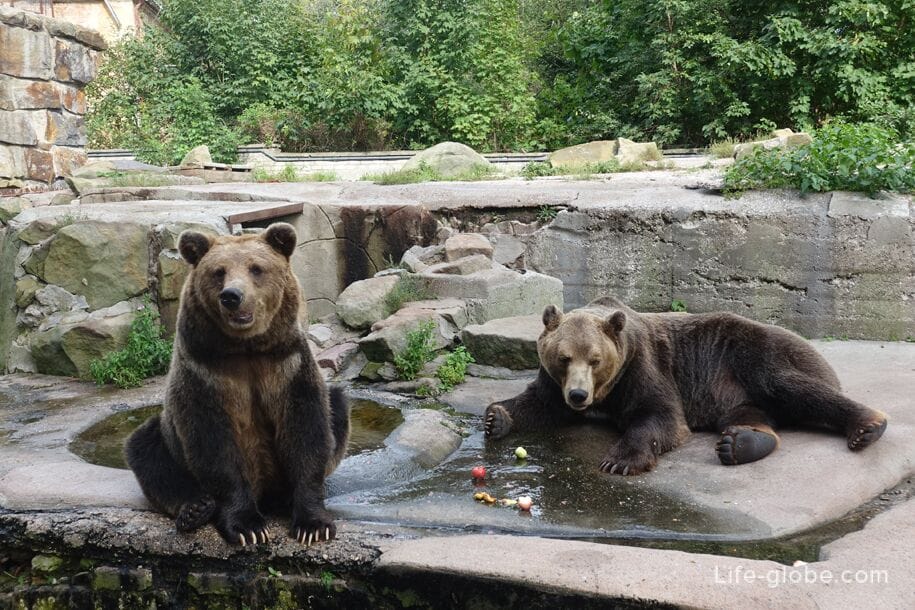
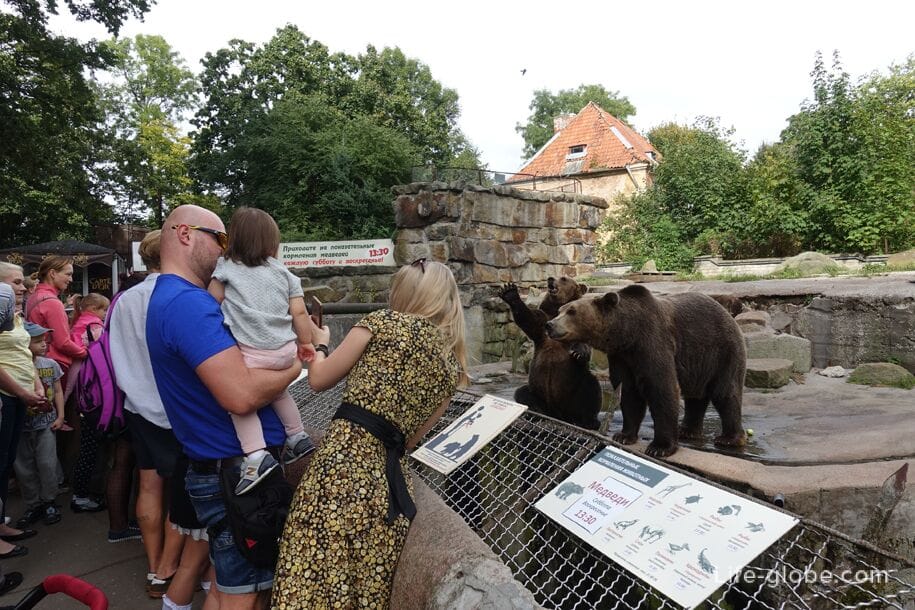
A dwarf hippopotamus. Shoulder height reaches only 75-100 centimeters, body length - 150-170 cm, weight - 180-270 kilograms. They live alone, rarely in pairs. Territorial, near-water, very secretive, active at night, swims well, feeding - branches of shrubs, fruits of plants.
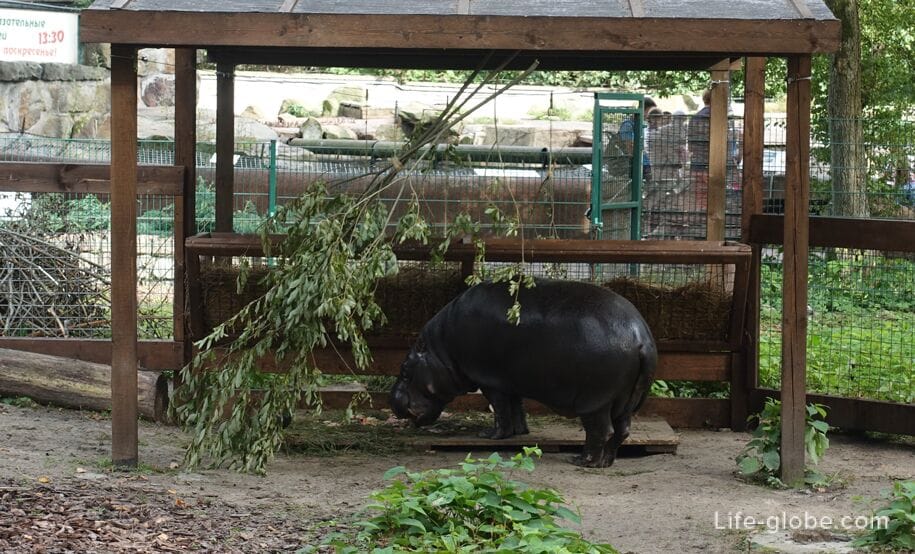
Reservoir. Pink (common) flamingos and pelicans live together here.
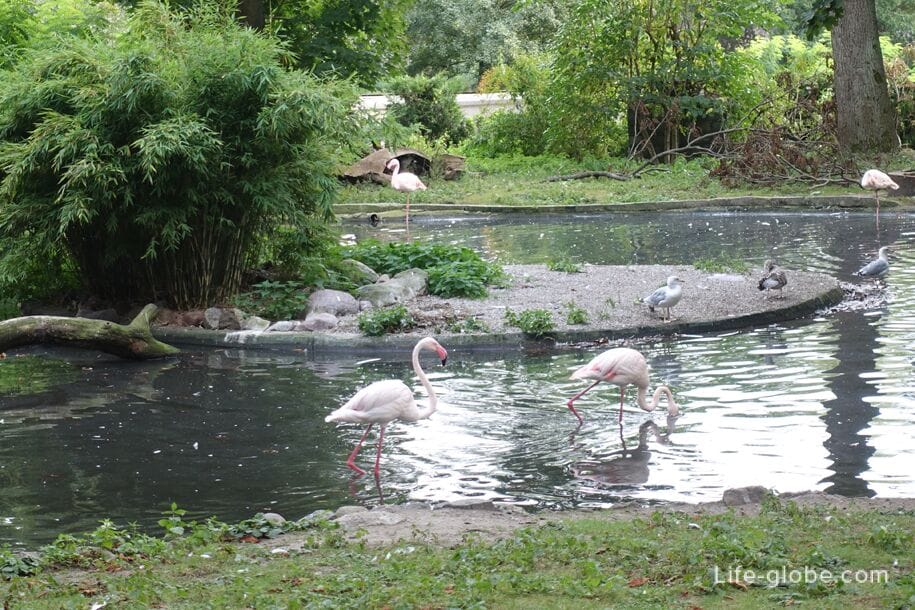
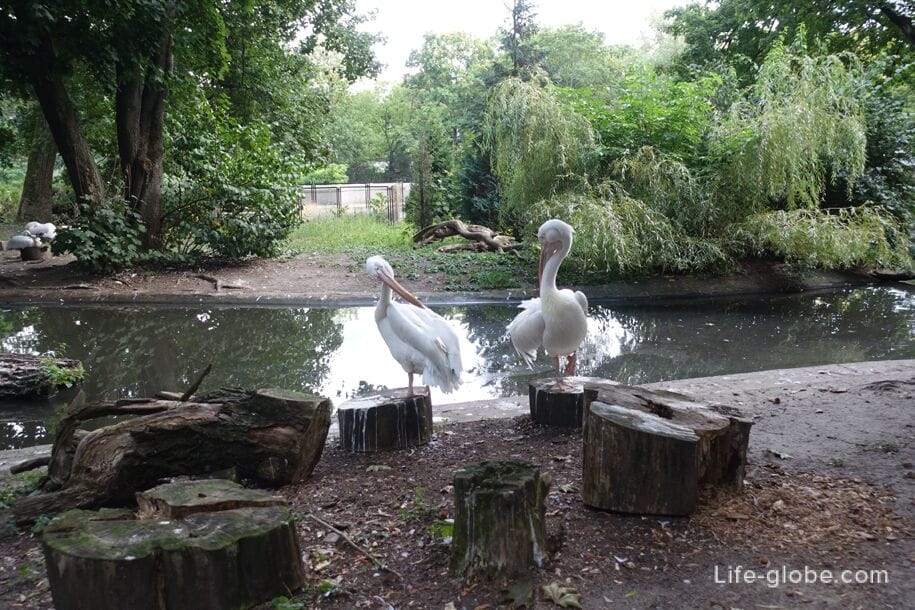
Bennett's kangaroo. Body length up to 95 centimeters, tail length - 60-90 cm, weight up to 22 kilograms. Jumps reach 12 meters.
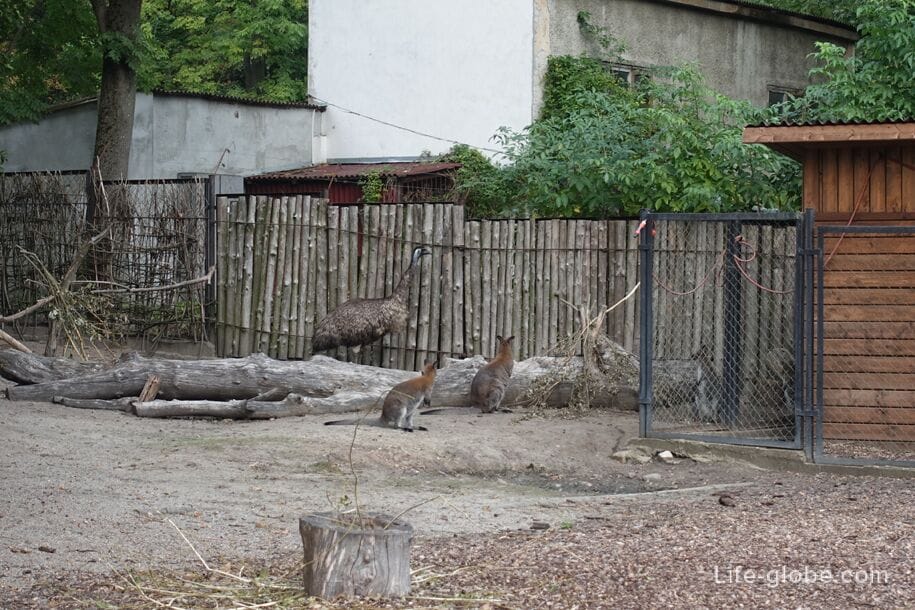
Reticulated giraffes, African ostriches and Cameroonian goats walk in a spacious aviary. Did you know:
- the pattern on the skin of each giraffe is individual, like human fingerprints?!
- despite such a long neck of giraffes, like all mammals, including humans, there are 7 vertebrae in the cervical spine?!

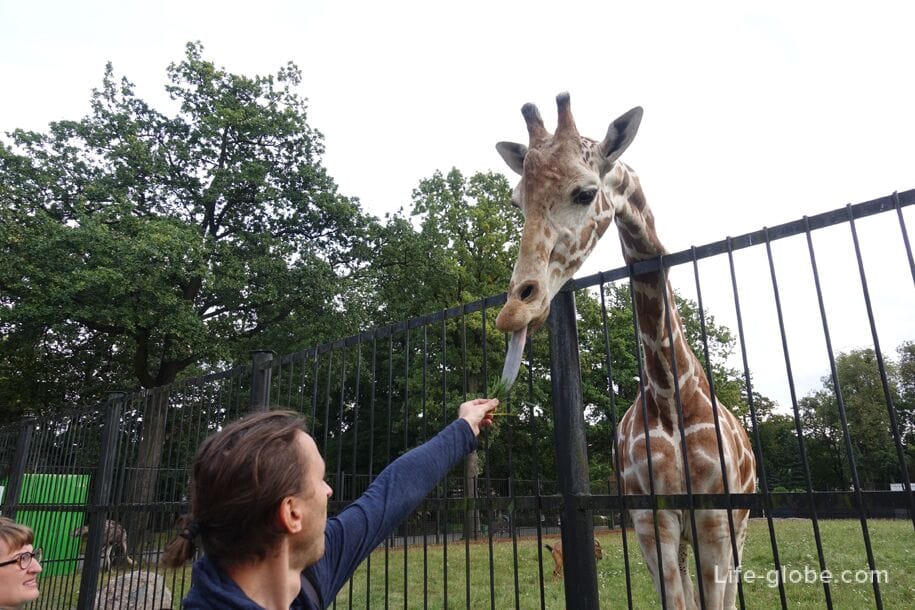
Grant's zebra, which you can almost reach with your hand.

The camel is double-humped.
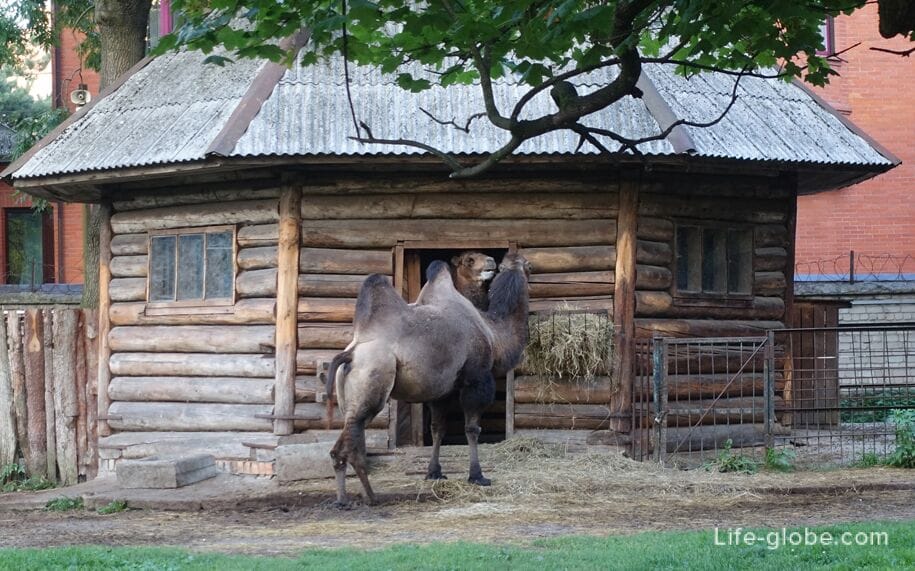
The llama is a domestic pack animal of the highlands of South America (up to an altitude of 4,000 meters above sea level).
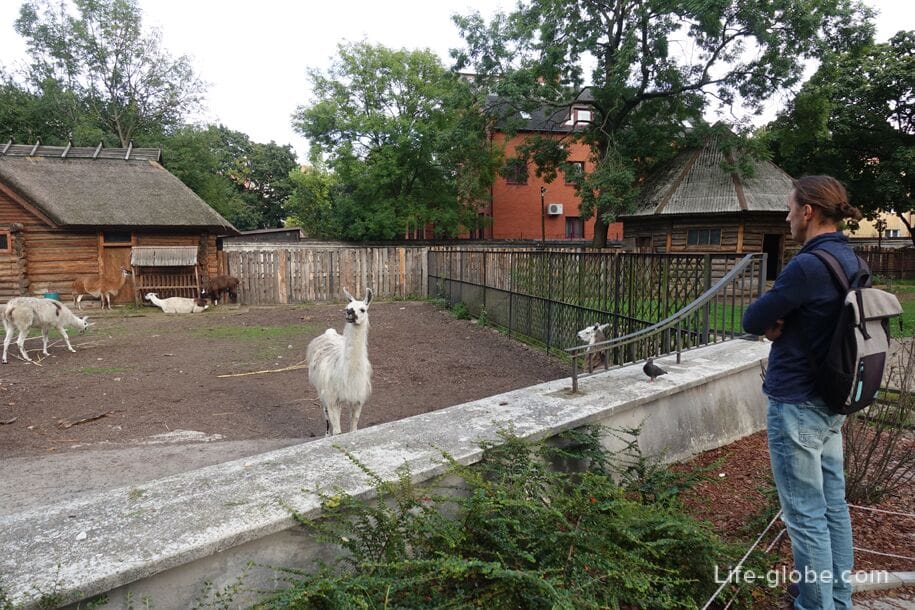
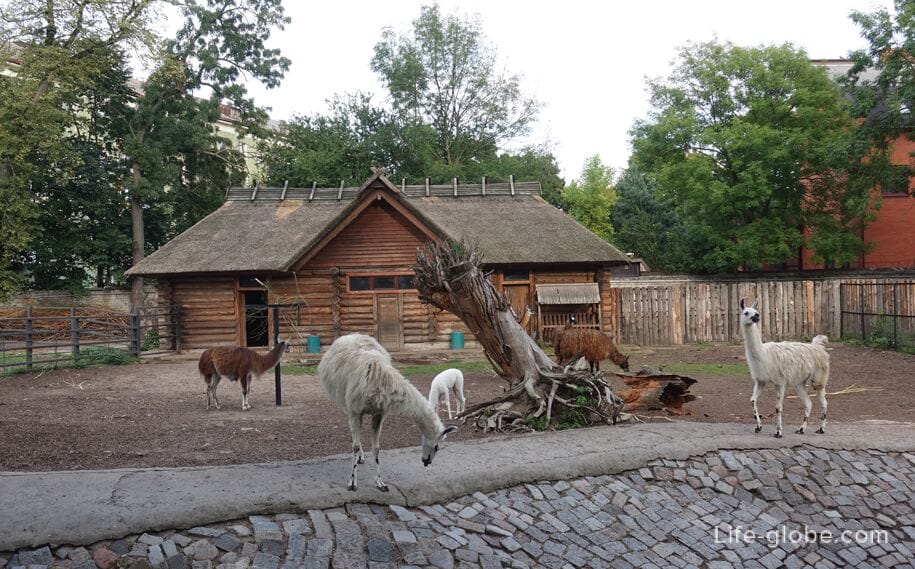
The guanaco is the ancestor of domesticated species - llamas and alpacas, which appeared 4-5 thousand years ago. Currently, they make up less than 10% of the total number of South American camels.
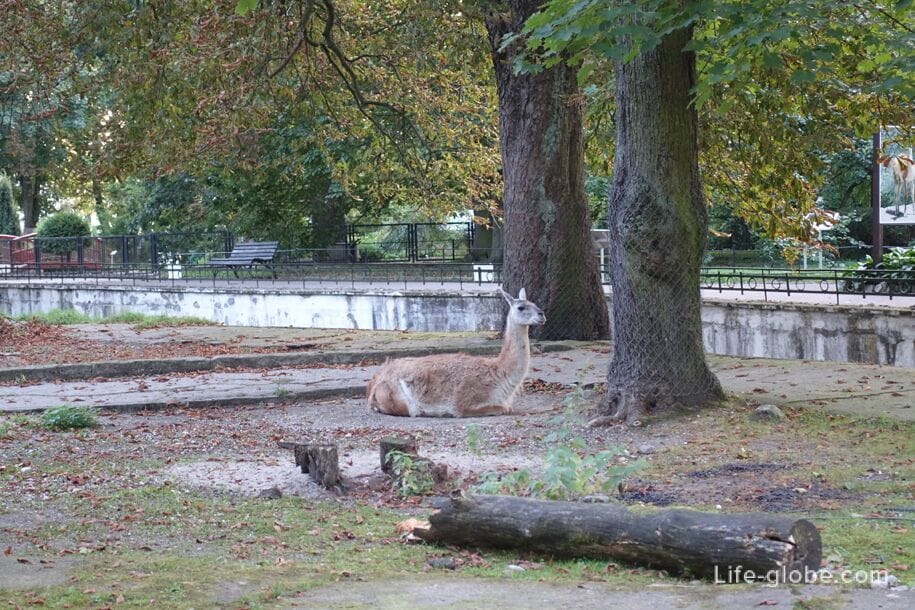
Geese and goats are domestic, which are eagerly fed by the kids.


Bison. In the 16th century, up to 30 million bison lived in North America. By 1900, the species was practically exterminated by Europeans for leather needs and as entertainment. With the help of conservation measures, bison managed to be preserved in some national parks of the USA, Canada and zoos of the world.
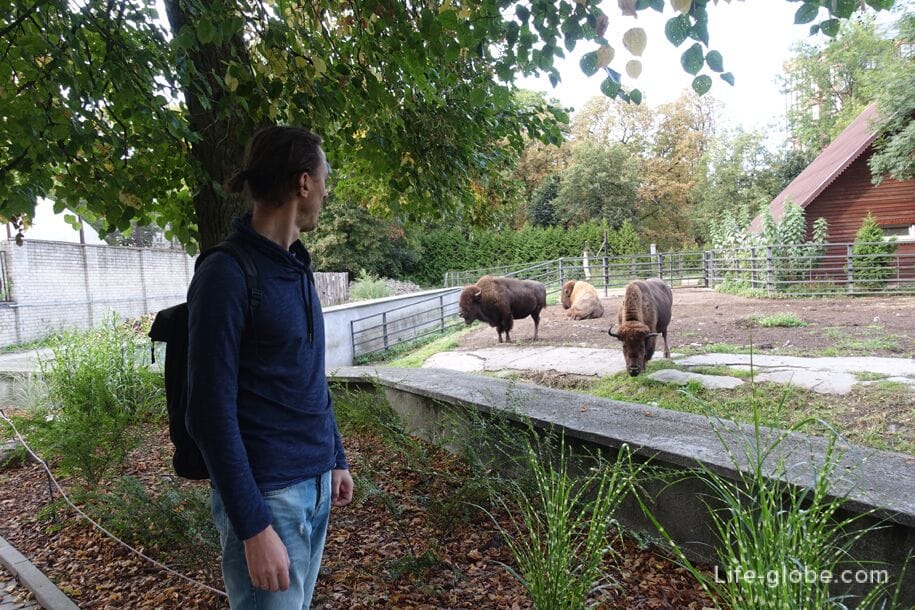
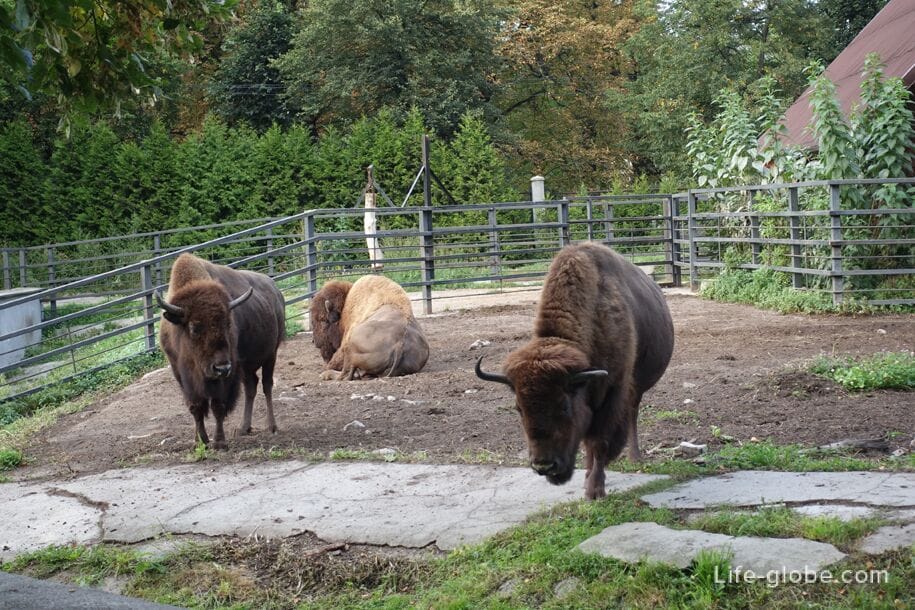
Tundra wolves - have silky fur of greater length than the other subspecies, which protects well from the cold. The color is usually light. One of the 6 subspecies of wolves living in Russia. It can eat up to 14 kilograms of meat at a time. Packs of wolves are able to prey on such large animals as deer and elk.
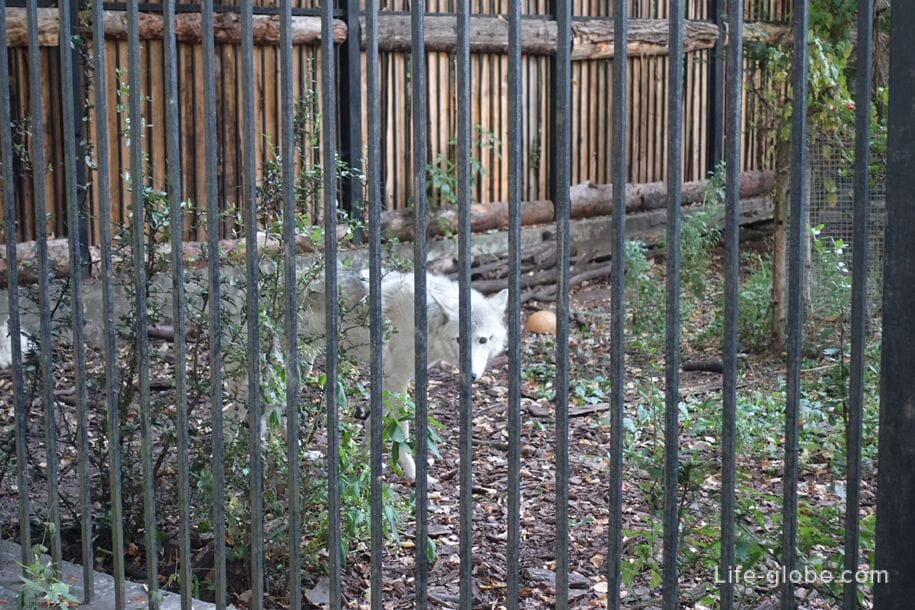
The East Siberian lynx. It is able to detect small animals even under a layer of snow and see them in complete darkness. The victim is tracked from an ambush, catches up with jumps up to 4 meters, but pursues no more than 80 meters.
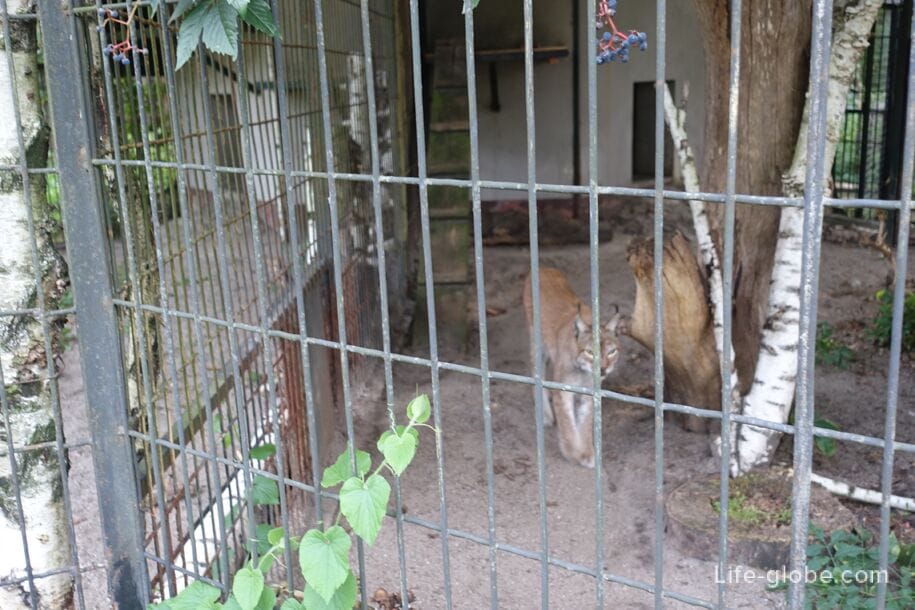
The "grounds" of the primate order: mandrills, red lemur vari, oriental colobus, Japanese macaque, Oedipus (crested) tamarin, orangutans.

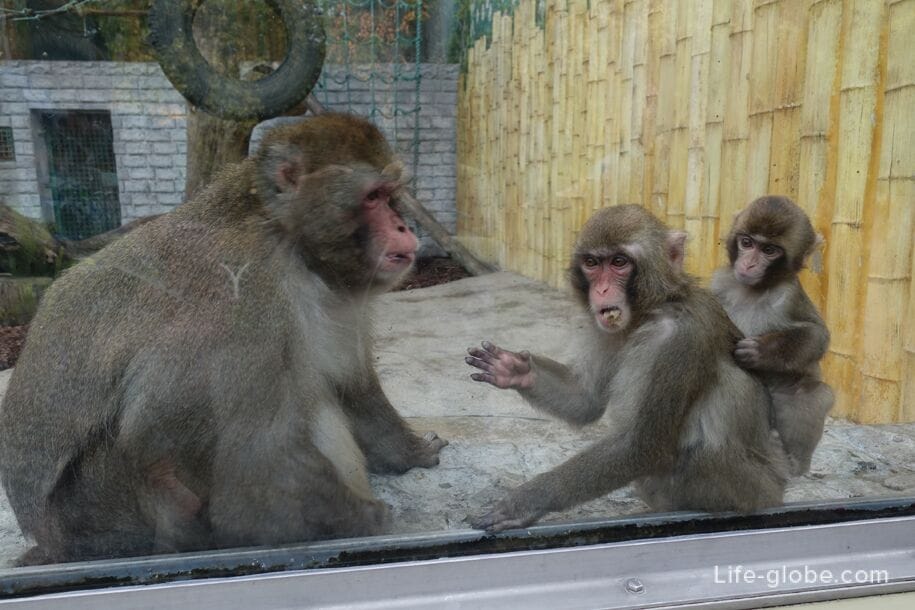

Hippopotamus. Territorial, semi-aquatic, come to land only for feeding after dark. On land they are very aggressive among themselves, sometimes they get into fights with elephants and rhinos. They live in families of 10-30 heads - females with growing cubs and adult males. The skin is up to 4 centimeters thick. Special skin glands secrete a reddish mucous secret in extreme heat, which protects the skin from sunburn.

The Amur tiger is one of the rarest representatives of the world's fauna. It is the object of one of the main programs of the World Wildlife Fund of Russia for the protection of rare species.
They lead a solitary lifestyle, adhering to an individual plot of 300-500 sq.m. In the Kaliningrad Zoo, two tigers live in separate enclosures located next to each other.
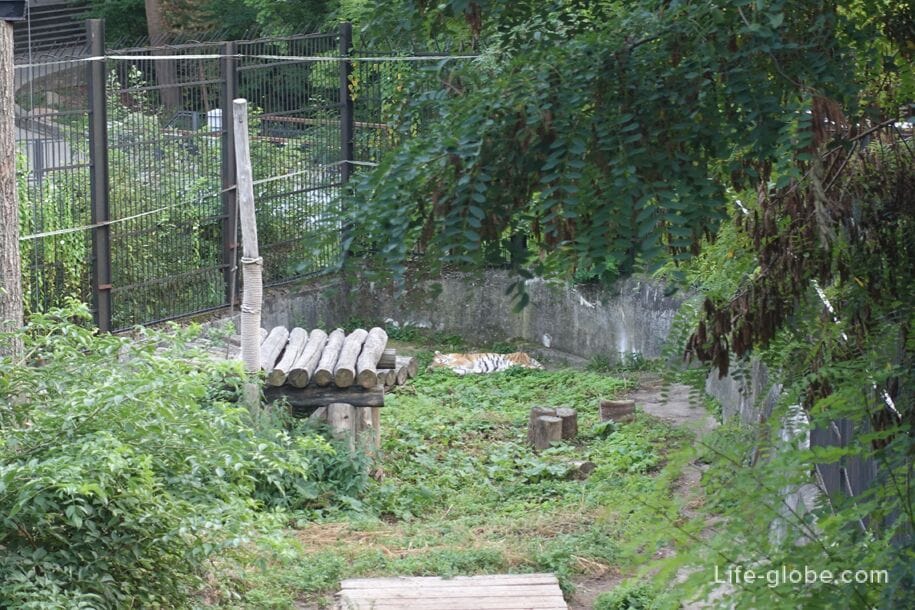
Lion couple - male and female.

Tiger python (albino). Atypical albino coloration is caused by a mutation of one of the genes. Such individuals are very decorative, but in nature, as a rule, they do not survive.
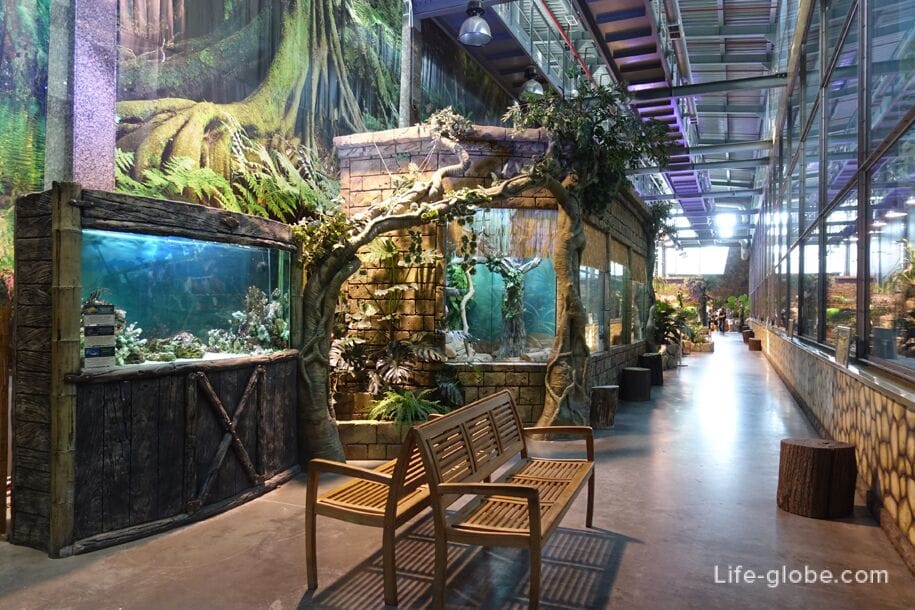

Giant (long-legged) tree frog. After the rainy season, only males "sing" during the mating season, and females choose a future partner "by voice".

Crocodile is a broad-faced caiman. They are found in the reservoirs of South America. The lifestyle is mainly nocturnal. Both parents usually build a nest and take care of the offspring.
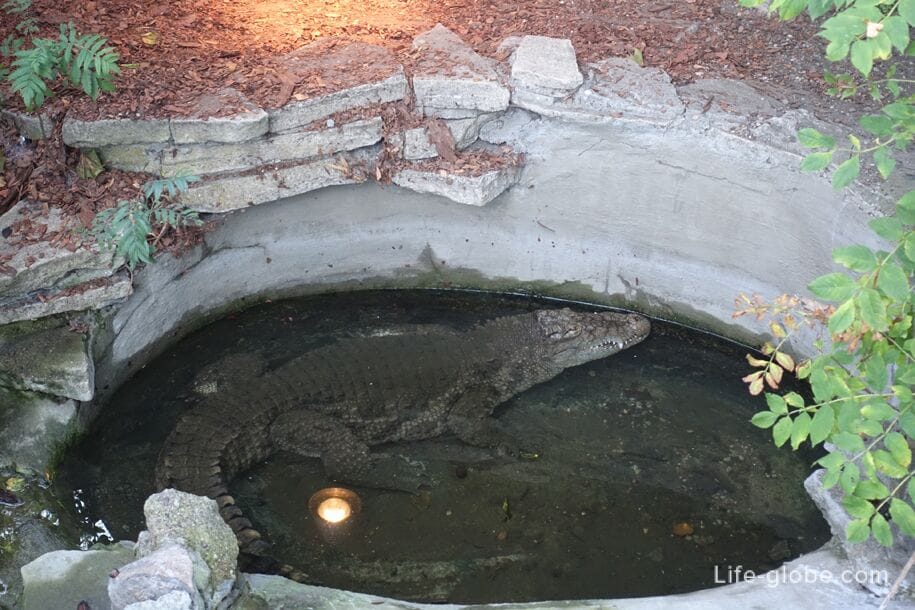
Aquariums
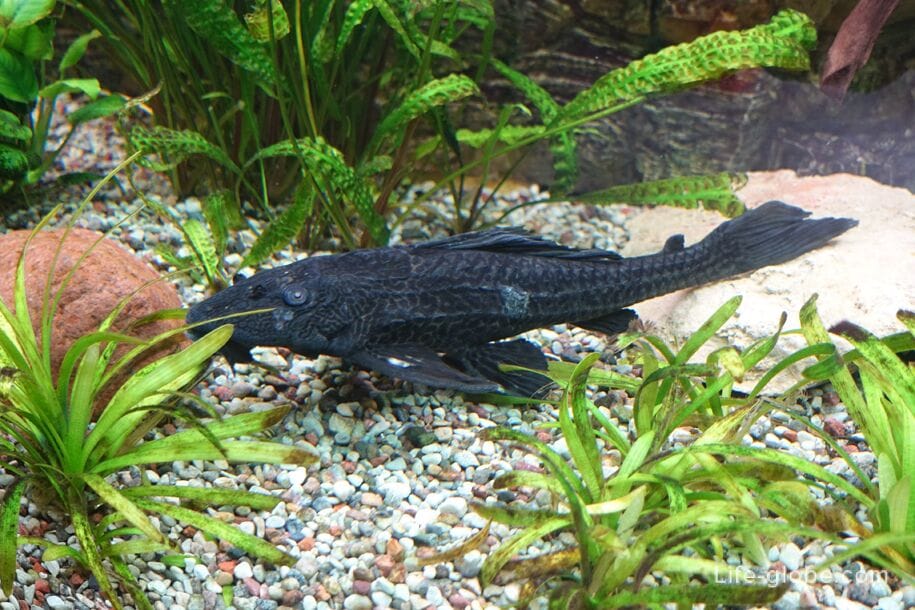

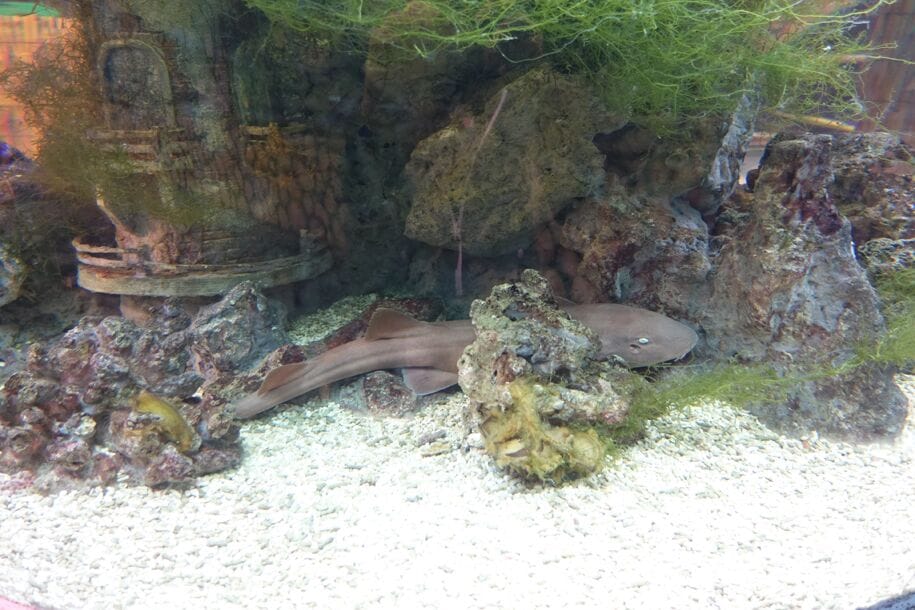
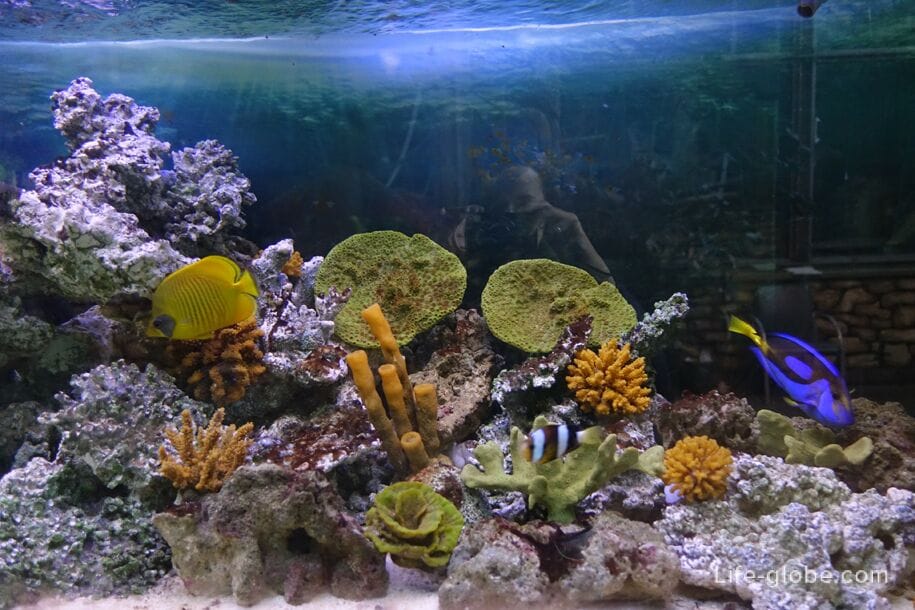
On the territory of the zoo there are several cages for birds, part of which is occupied by the "House of Birds". There is an information hall in the Bird House, where you can clearly see how chickens "mature" in the incubator, as well as bird nests, an installation of a kiwi bird nest with a video, there are chickens, parrots and other birds.
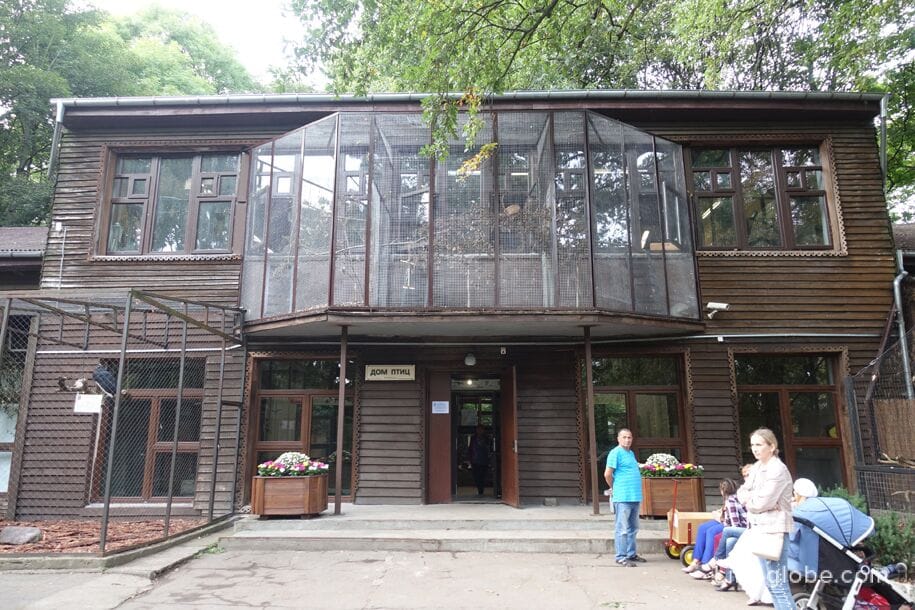
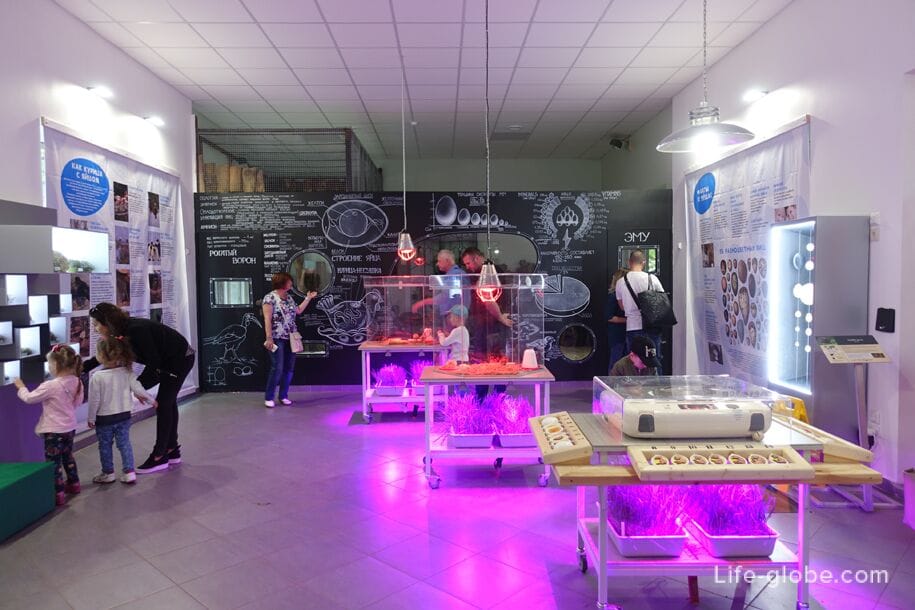
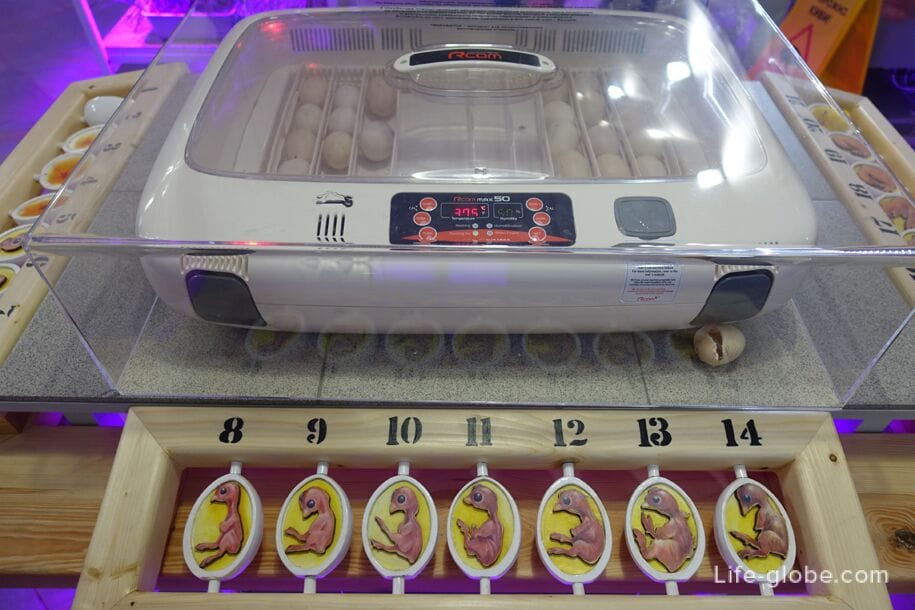

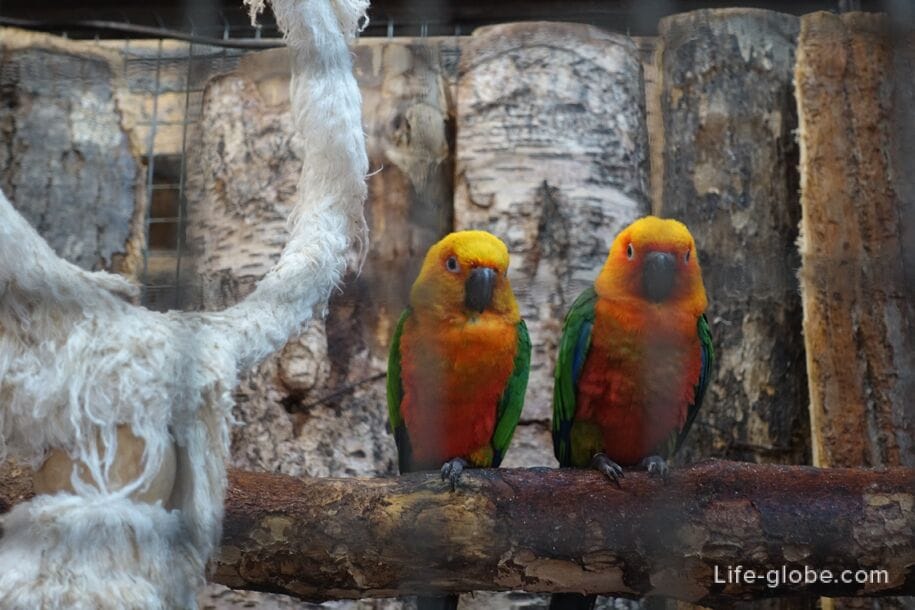
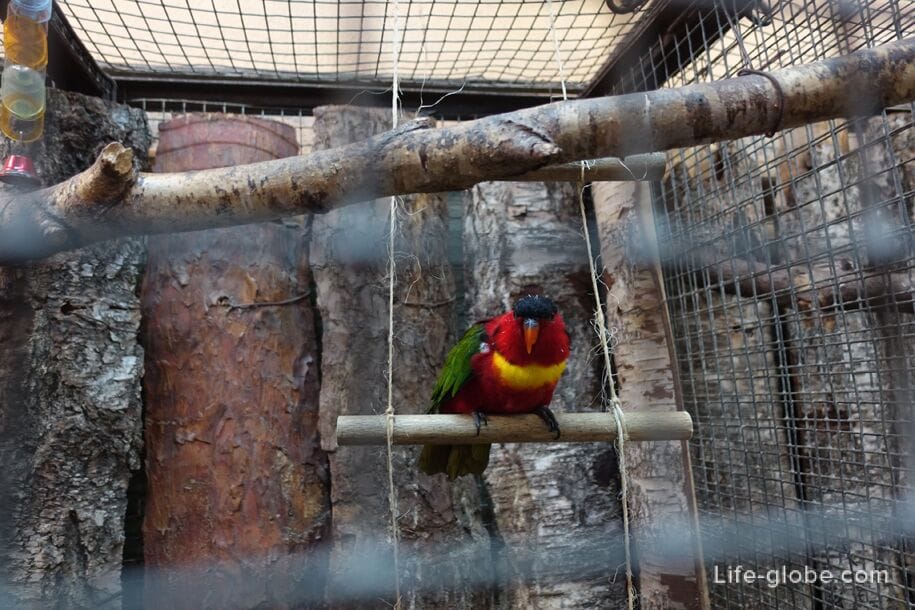
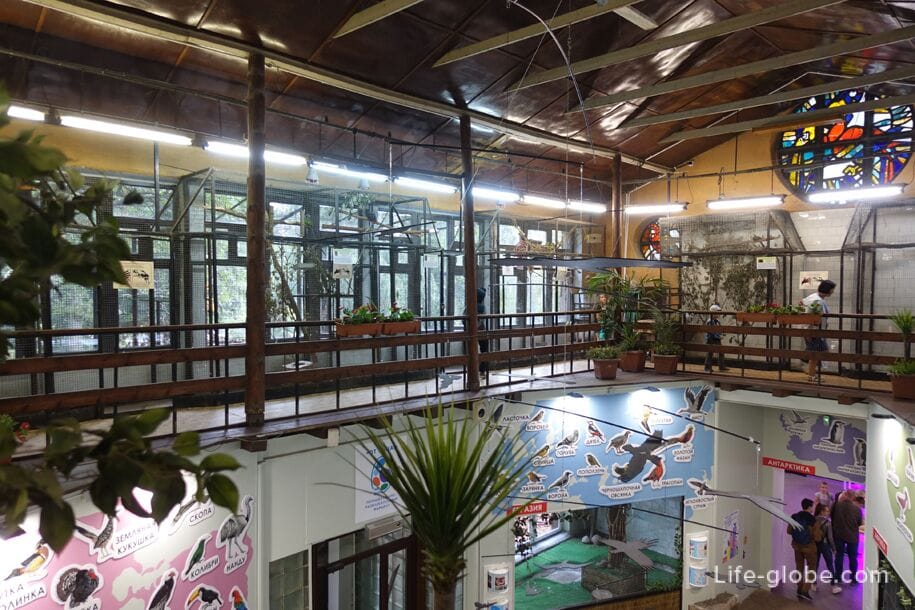
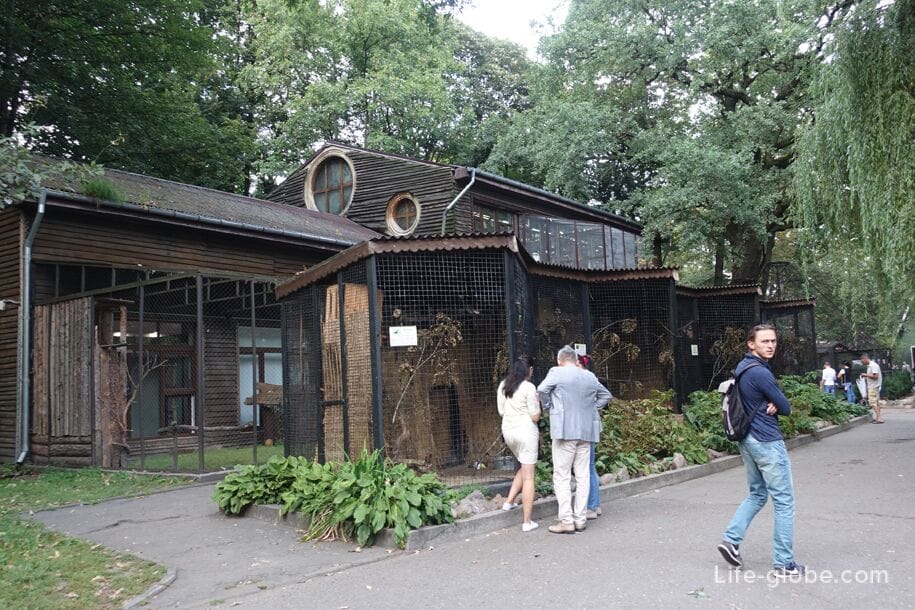
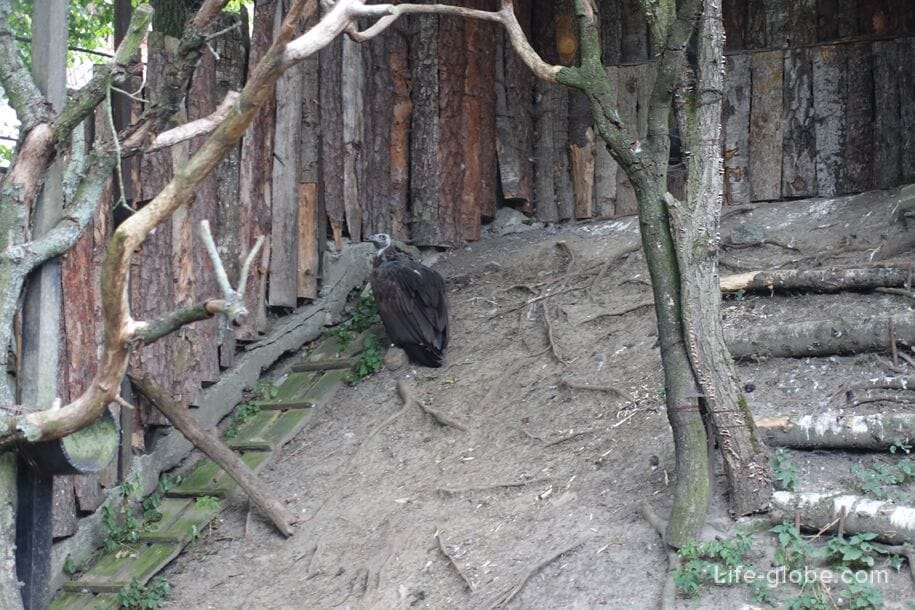
The animals listed above are not all the animals that live in the Kaliningrad Zoo. In addition to these, the zoo contains: an elephant, a giant anteater, a blue ram, a Dagestan tur, a Tajik screw-horned goat, urial, turtles, etc.
On the territory of the Kaliningrad Zoo there is a small house of contact animals. In the house, you and your children can see, pet or hold a rabbit, a hamster, a ferret, a turtle, snails and Madagascar cockroaches.
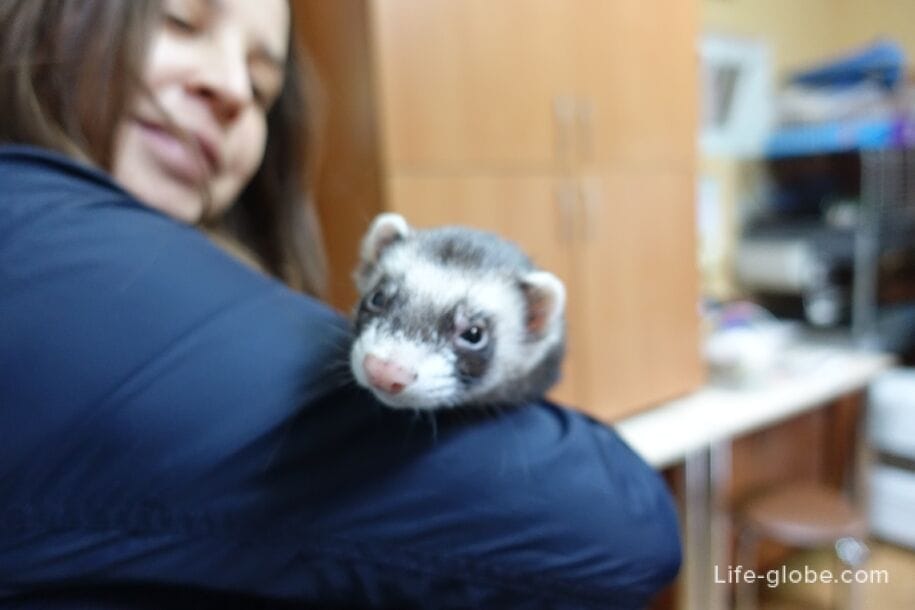
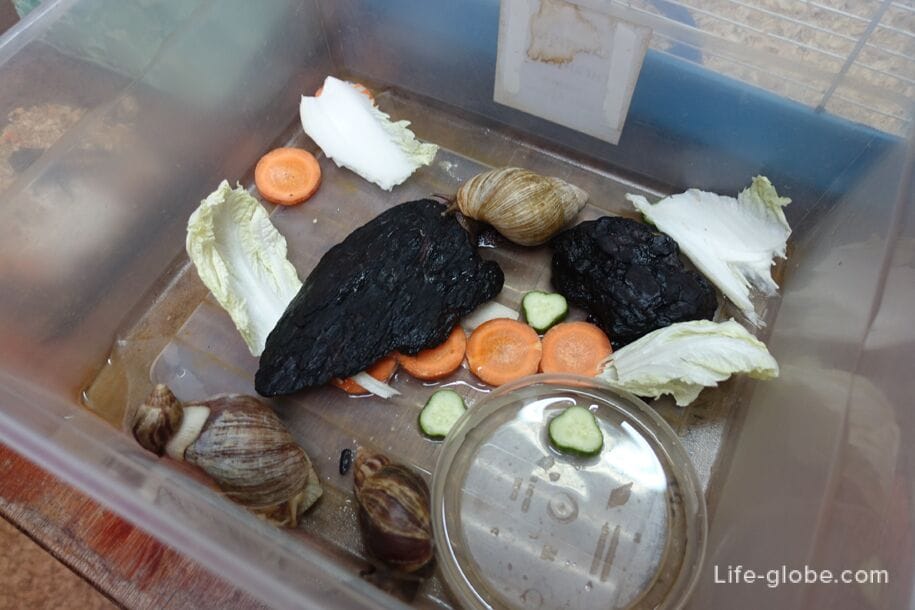

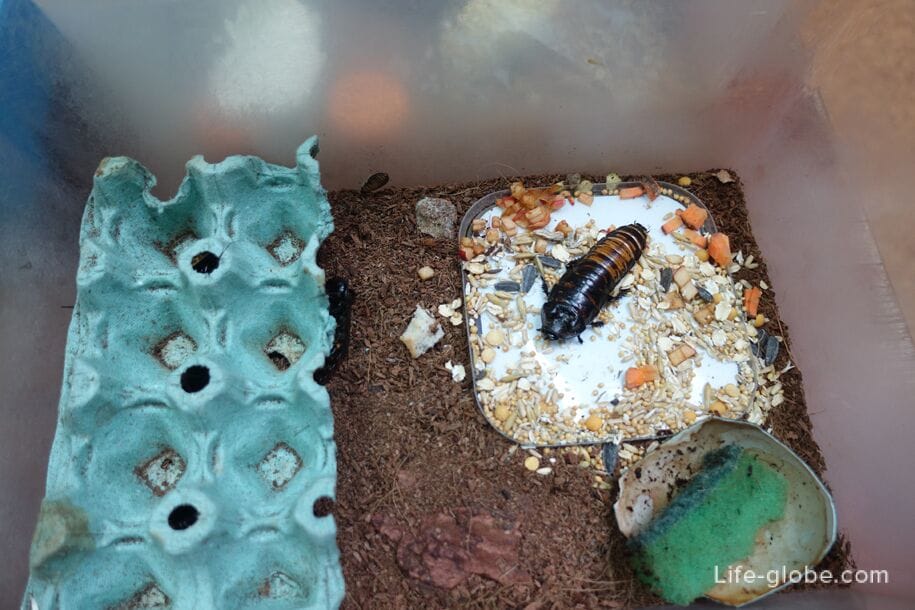
The arboretum of the Kaliningrad Zoo was inherited by him from the Koenigsberg Zoo. Already at the beginning of the XX century, the Koenigsberg Tiergarten arboretum could have been the envy of any park in Europe. At the same time, trees, flowers and shrubs served not only for the design of animal enclosures, but also for the planning of the territory.
Currently, the Kaliningrad Zoo is also an arboretum, on the territory of which you can see plants, for example, oaks, linden trees, yew - listed in the red Book of the region, a relict ginkgo tree - the same age as dinosaurs, forest beech and sakura kanzan.
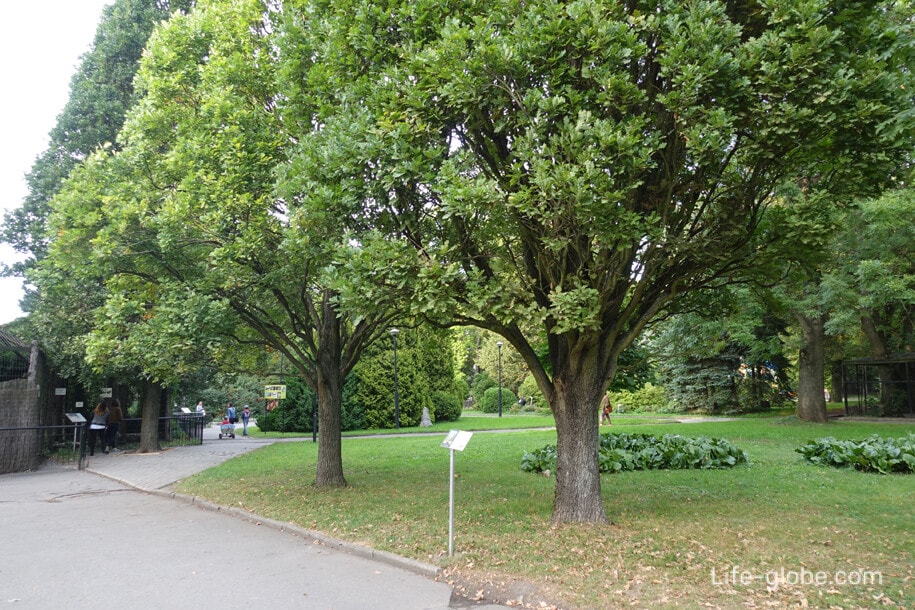

The installation of 2012, made in the form of a spatial composition of 4 animals, built in the form of a pyramid by analogy with the sculpture of Bremen musicians.
The installation refers us to the tragic events of the Second World War. There is no information about the fate of the inhabitants of the Konigsberg Zoo during the war. But after the storming of the city in 1945, only four of the animals remained alive: a hippopotamus, a fallow deer, a donkey and a badger. They became the prototypes of this sculpture, which serves as a reminder that everyone suffers during military operations, even animals, and a warning that such things should not be forgotten and, as a result, never happen again.
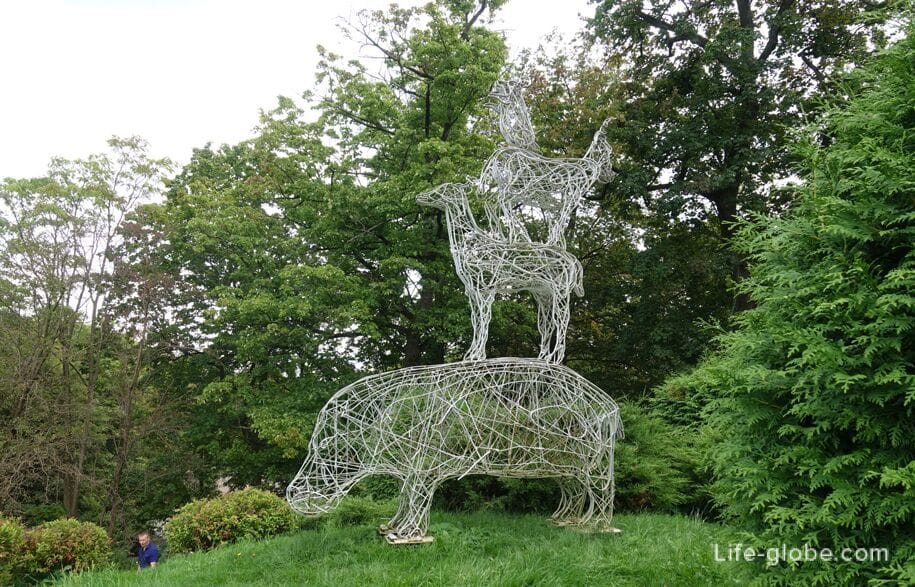
Granite sculpture-monument "Walter von der Vogelweide" 1931. Sculptor G. Fugue.
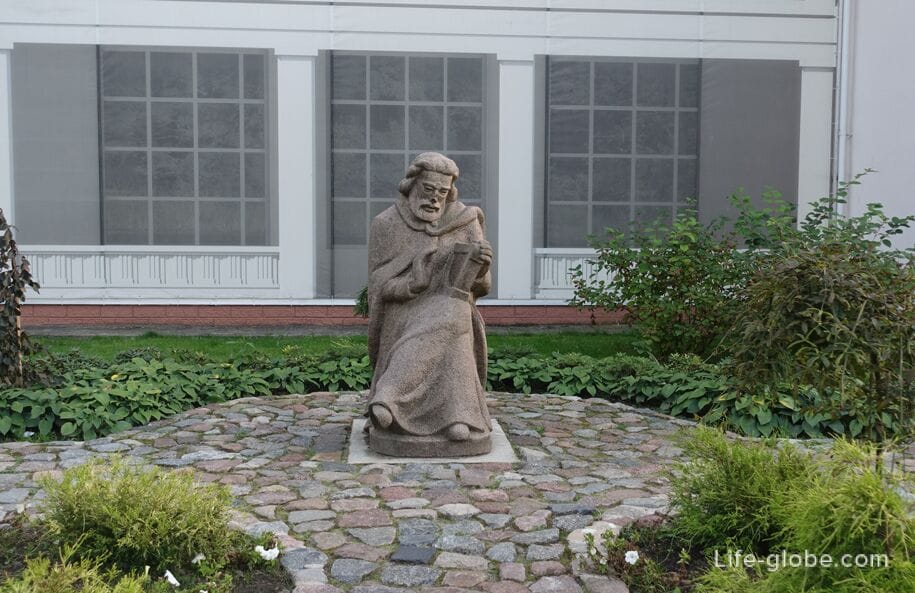
A monument of art of regional significance dedicated to the first director of the zoo Hermann Klaass with a bas-relief on a pedestal (V. Rosenberg square, bronze, artificial stone, 1913).

A sculpture consisting of three hearts, located in a small park of the Kaliningrad Zoo. It was transferred to the residents of Kaliningrad in 2005 by the city of Halmstad (Sweden).
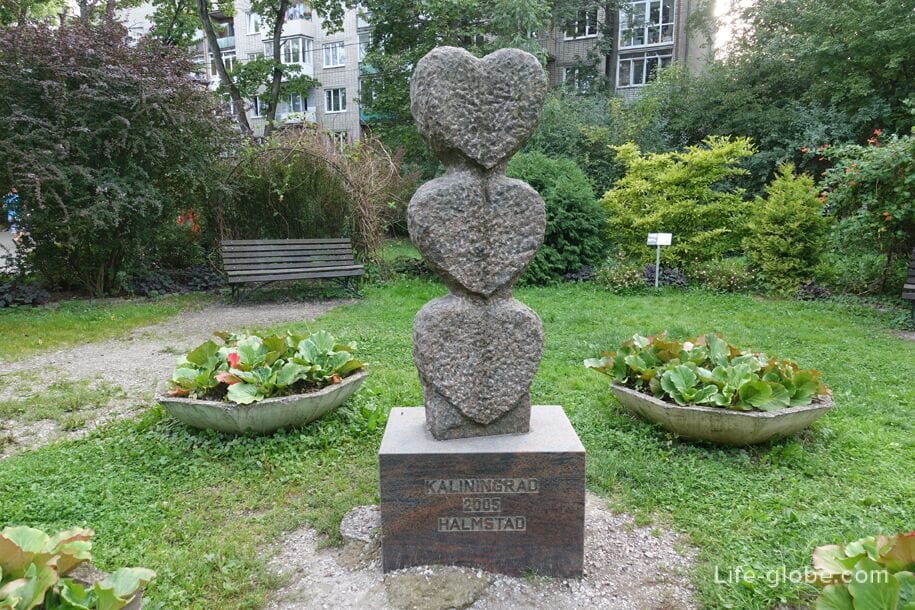
A monument of art of municipal significance is the sculpture "Girl with a fawn" (artificial stone, 1915).
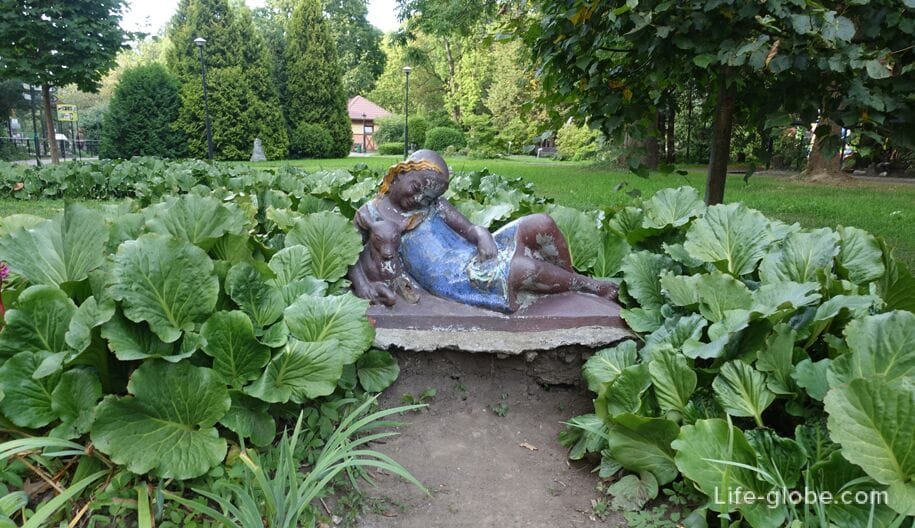
A monument of art of municipal significance is the sculpture "Orangutan" (L. Steiner square, red porphyry, 1930).

Paths, paths, alleys and places for walking and recreation



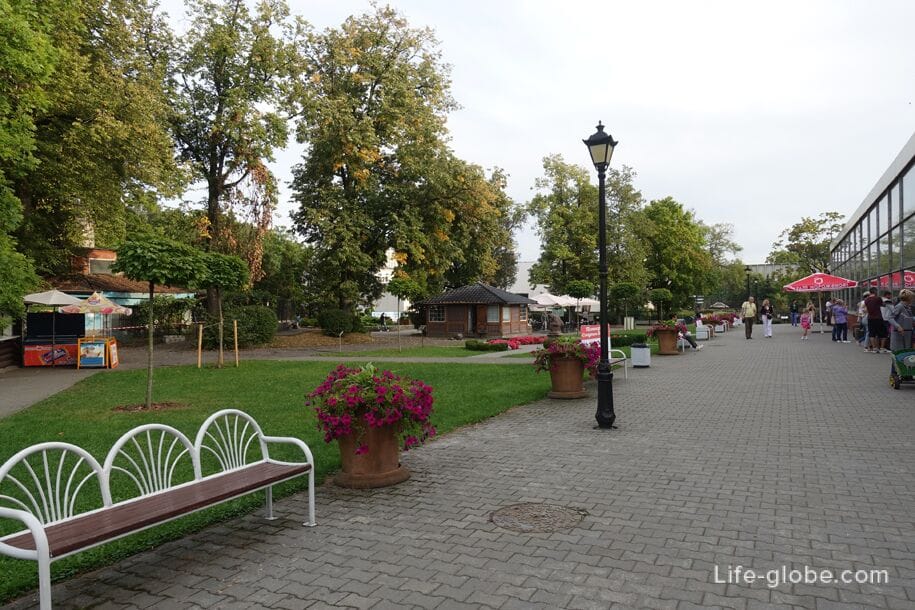
Reading Pavilion
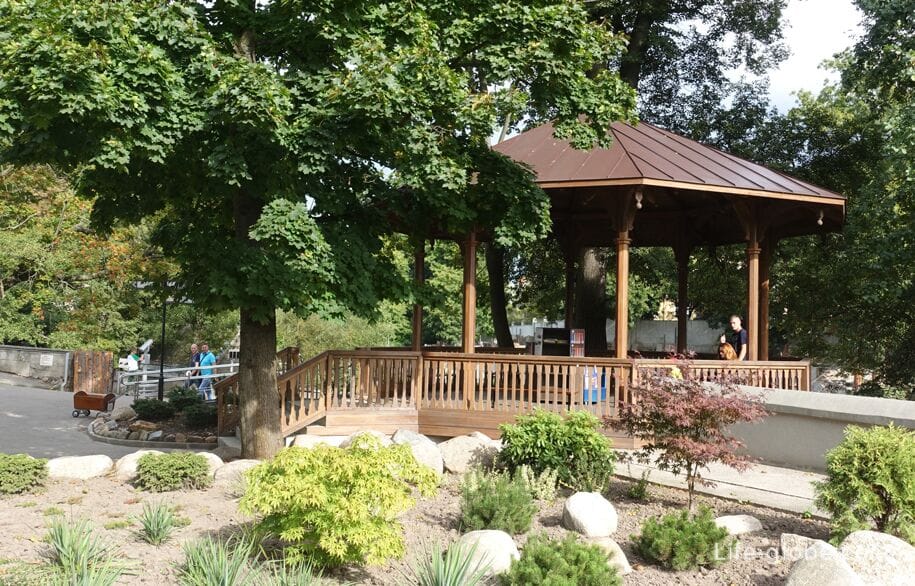
Ethnographic Museum. The idea of creating a museum of village architecture in the Koenigsberg Zoo originated in 1909. An example was the Scandinavian Museum in Stockholm (there were no similar museums in Germany at that time). For the exposition, it was planned to collect objects most typical of the architecture of each of the regions of East Prussia.
Due to the poor condition of the buildings intended for relocation, it was decided to make copies of them. In a few years, about 30 replicas of objects from the 18th and 19th centuries were built, representing residential, sacred, industrial and household premises.
On December 16, 1912, the grand opening of the first open-air museum of local lore in Germany took place. There were guided tours in the museum.
In 1938, due to the limited territory in the zoo and in order to further develop the museum, the authorities decided to move it to the southern part of East Prussia on the Hexenberg Mountain ("Witch Mountain") near the town of Hohenstein (now the city of Olsztyn, Poland). But not everything was transported.
From the original collection to the present day, only 12 structures have been preserved, which are located in the Museum of Folk Architecture (Ethnographic Park) in Olsztyn.
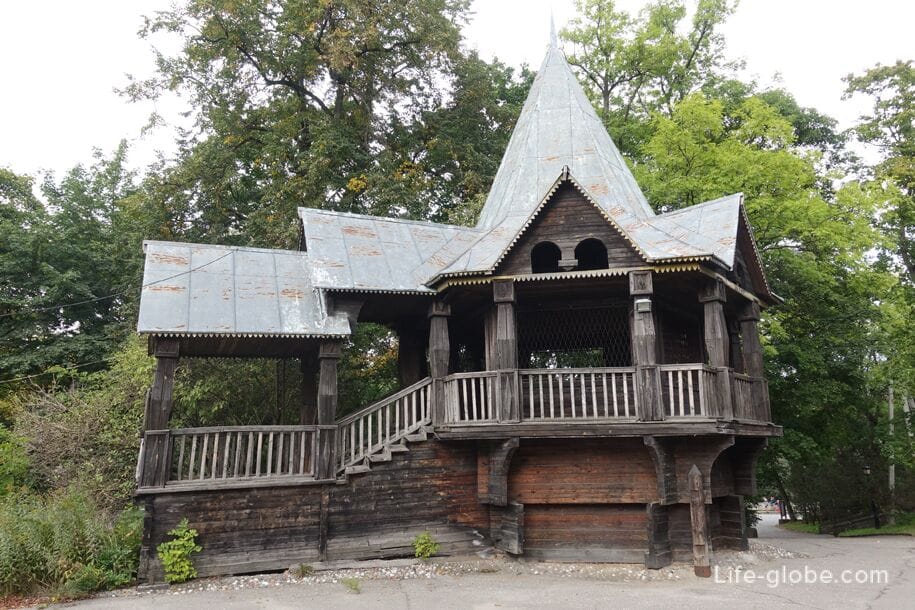
Children's entertainment: trampoline, jumping ropes, a train on which you can take a 7-10-minute walk around the zoo (cost 150 rubles).
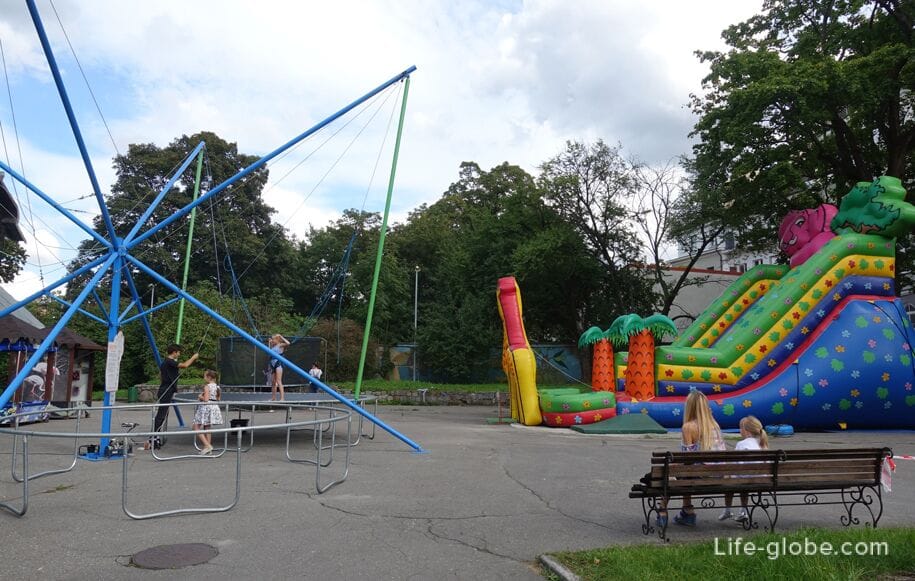
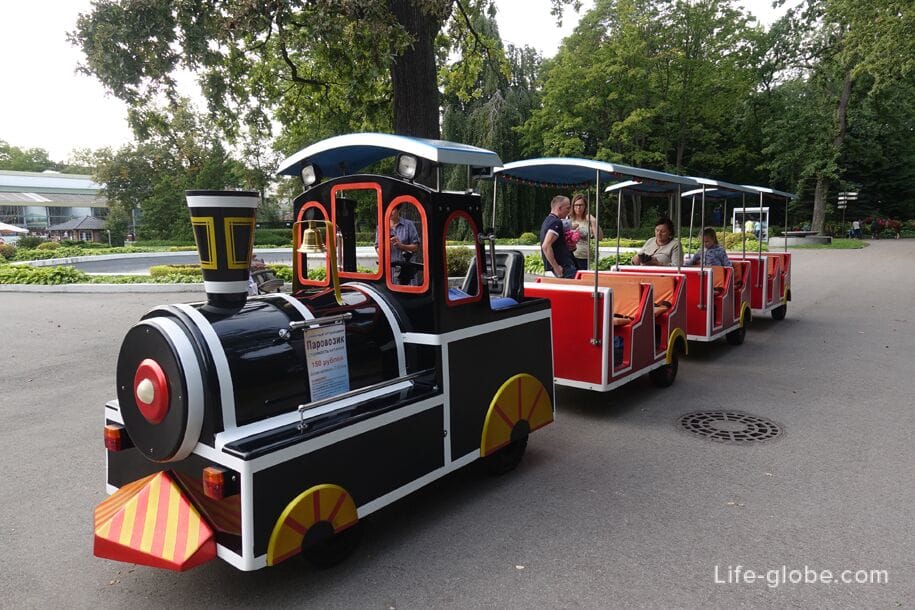
The zoo also has: places for picnics and snacks; toilets; several cafes and eateries (prices are moderate).

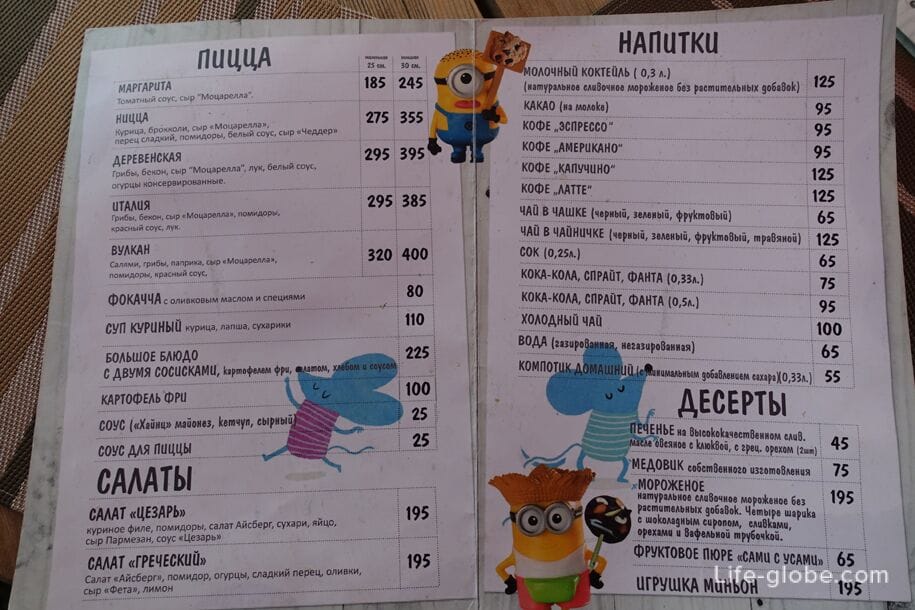
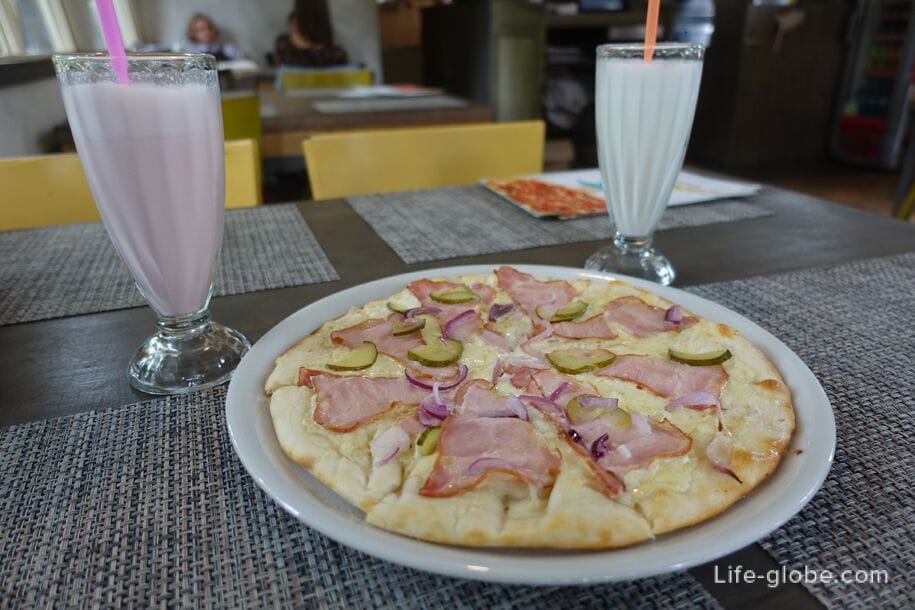

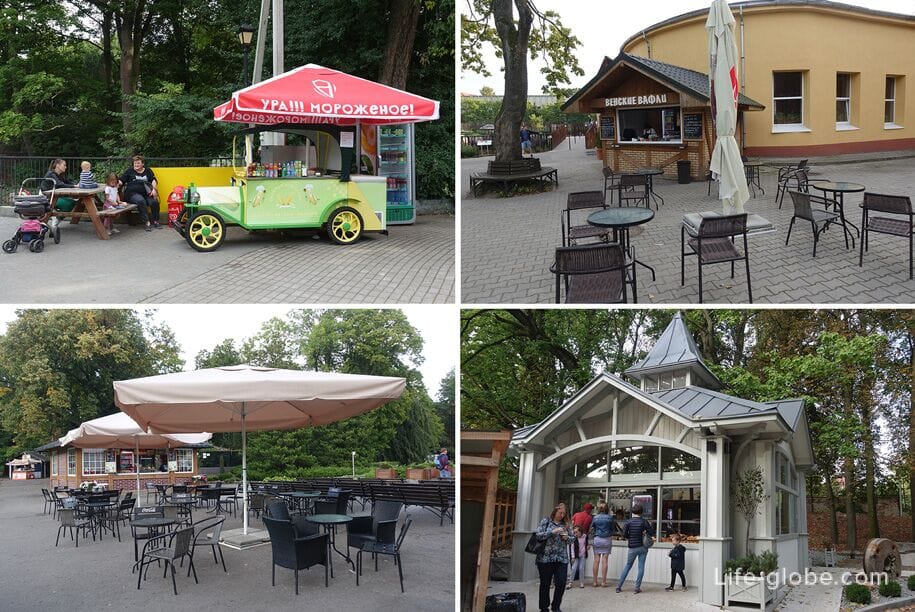
The Kaliningrad Zoo is located in the city center, between Mira Avenue, Zoologicheskaya, Tchaikovsky, Rustaveli, Brahms and Nosov Streets.
It takes 15-20 minutes to walk from Victory Square, and 5-10 minutes from Central Park.
The main entrance to the zoo is from Mira Avenue.
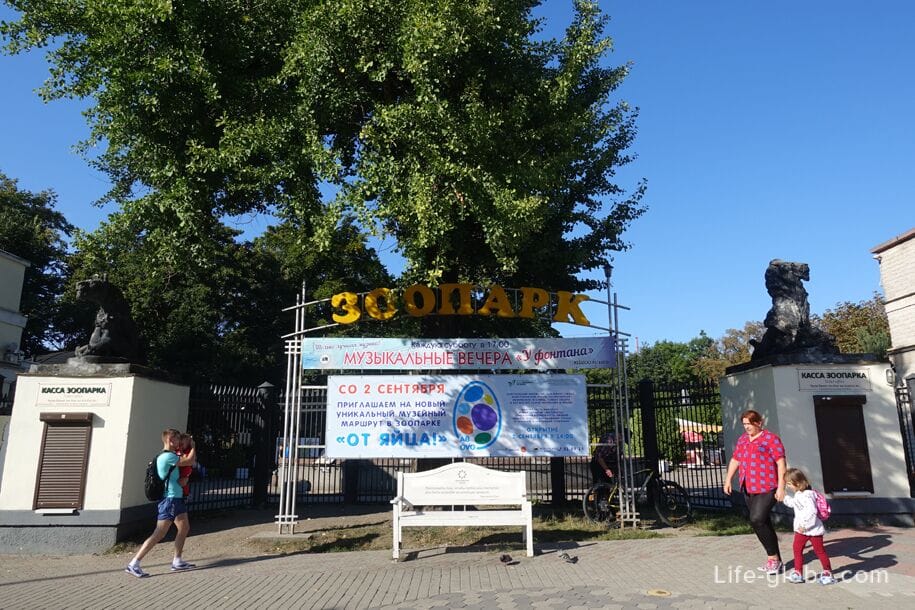
The address of the zoo: Kaliningrad, Prospekt Mira, 26.
How to get there: buses №№ 2, 3, 5, 8, 9, 12, 14, 24, 28, 31, 36, 48, trolleybus № 6, minibuses №№ 61, 63, 65, 72, 74, 82 and 92. Stop - "Zoo".
Zoo opening hours: daily, from 09:00 to 19:00 hours, ticket offices - until 18:00 hours.
The cost and purchase of tickets: adult - 218 rubles, children - 70 rubles, pension / student - 100 rubles. Tickets can be purchased online (on the official website of the zoo) or at the ticket offices in front of the entrance.
Attention! Zoo opening hours and ticket prices may vary, please check before visiting.
Official website of the Kaliningrad Zoo: kldzoo
How much time to allocate to the zoo: the zoo is quite large and interesting. Ideally, with a leisurely walk and a snack in a cafe - the whole day. Arrive around 11:00 and hours before 17:00 or before closing.
Kaliningrad Central Park (formerly Kalinin Park) is one of the parks of the city of Kaliningrad.
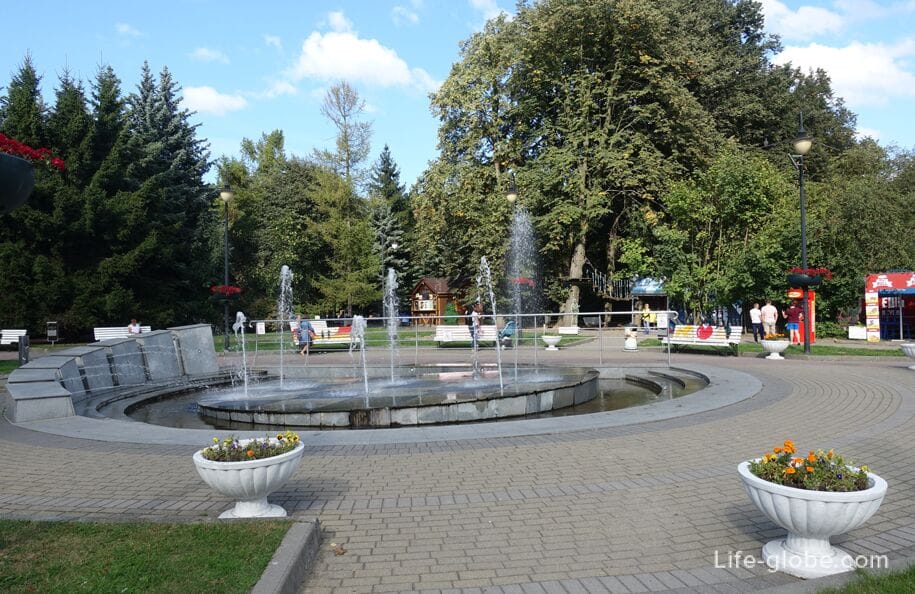
The Poplavok Pond and the former district of Konigsberg Amalienau is one of the oldest and well-preserved German districts of the city of Kaliningrad.
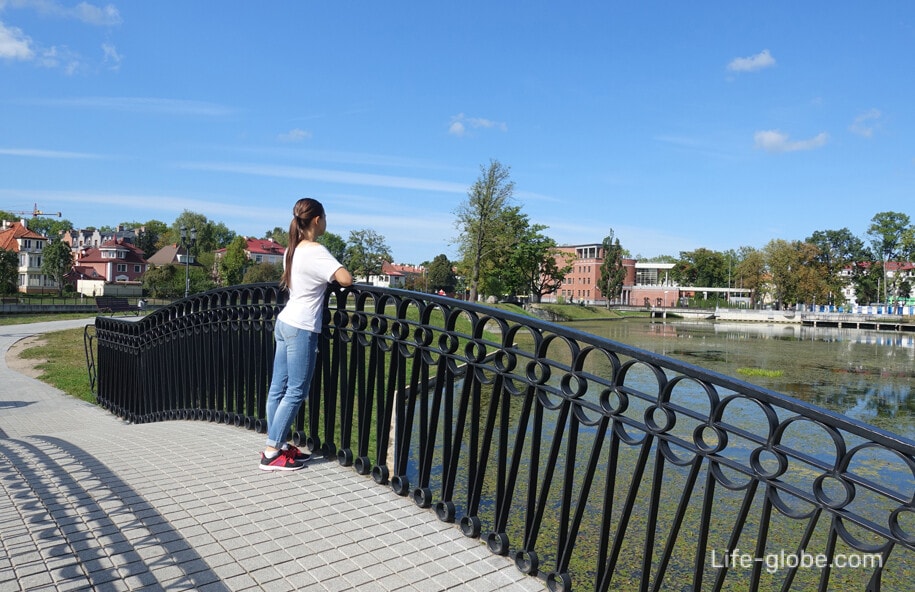
You can visit the Amalienau area on your own or with one of the excursions from Kaliningrad guides:
Hufen is a historic district of Konigsberg.
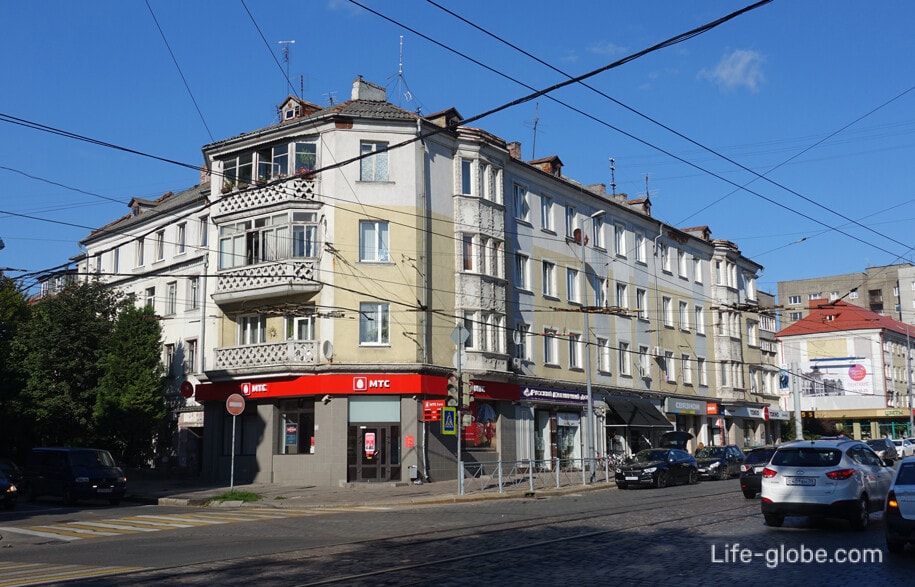
You can visit the Hufen district on your own or with excursions from a Kaliningrad guide:
The Altes Haus apartment Museum is located in a house built in 1912. The museum shows the family life of the family of Gustav Grossmann, a merchant and owner of a grocery store, and tells the story of the urban district of Hufen.
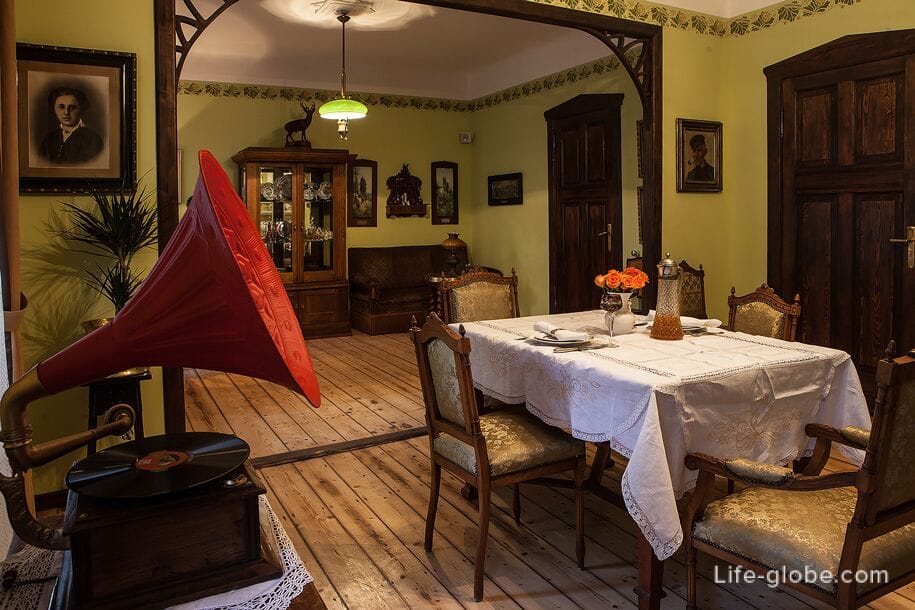
Victory Square is the central square of Kaliningrad.
